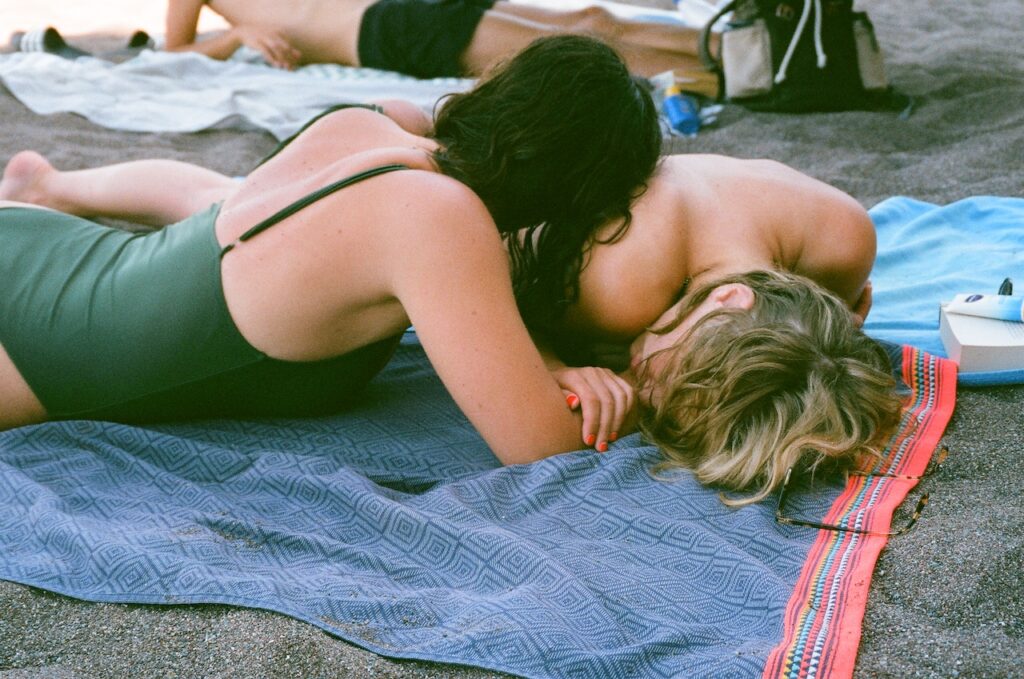In the pictures of the Greek photographer Spyros Runs (born in Athens, lives and works in Berlin) the bodies become entangled, the kisses take place between homosexual couples and the nude replaces the clothes. Depicting a dreamlike yet dynamic landscape, his shots explore above all the allure of freedom and sexuality as seen in queer spaces and club dance floors across Europe. Identity, community and intimacy are elements that recur in his work, particularly in his third photo book Physicallya project that has become a team effort thanks to the cover designed by the artist Marwan Kaabour and to the curator’s text Maya Kenney. His style of photography is clear – the ultimate goal is to document certain aspects of a changing society – the talent’s vision, loved by foreign fashion magazines, is to be discovered precisely because of its ability to focus on current events.
Interview with Spyros Run
Her representation of the queer community and beyond begins in the body. Why?
A starting point of my practice is the documentation of desire, the predominant aspect of which is carnal in nature. That’s why I document bodies, because I find them attractive and fascinating, and because they come in so many wonderful shapes and sizes. On the other hand, the idea of queerness is closely related to what we individuals do with our body: how we present it, how we dress it, what sex we have with it, how we transform it. This is another aspect related to my work.
Do you think the panel is affirming the absence of differences between people in these cases?
Yes, I wholeheartedly agree with this position: our bodies, in their primitive nature, make us all similar. Ultimately, we have similar needs and feel similar things. Our weirdness separates us from mainstream society, but our bodies bring us closer.
Complex positions often appear in your pictures, almost like sculptures formed from the body. Is there a specific reason?
I am fascinated by the different possible formations that result from one or more bodies together. I think the possibilities are really endless and that’s why I love to experiment photographically.
You live in Berlin, but the book was presented in Milan. Have you ever noticed a difference between the representation of the Italian and German queer communities?
I wouldn’t call it a German queer community because I know the queer community in Berlin: Those are two different things. As for the Italian queer community, I haven’t spent enough time in Italy to talk about it, but some Italian queers are featured in my book.

Spyros Run and Queer Communities
And instead a difference in the communities themselves?
In my experience, there is something universal about the queer experience.
Do you think that emancipation, hand in hand with awareness, can come from photos like yours?
In the past I’ve had messages from people telling me that my photos have made the publishing process smoother: it’s been a great pleasure. It is definitely my goal to contribute to queer visibility with my work and also to help document the era we are in.
Her third and last photo collection was not published by a publisher. Can we call you an “independent” photographer?
Self-publishing is what I’m looking for, both creatively and financially. Still, I wouldn’t turn down the chance to work with a publisher, if only to gain this experience. I am not currently represented by any gallery or agency, so the term independent photographer is correct.
How would you describe your situation as a photographer and how do you hope it will evolve?
I don’t think I’ll ever stop documenting my surroundings and experiences, but I don’t know how my interests will change. For example, nightlife may not be the focus forever. I will continue to be surrounded by queer people, so I assume this will remain one of my interests. All in all, I am just as excited as you are to see how my practice will continue to develop.
Giulio Solfrizzi